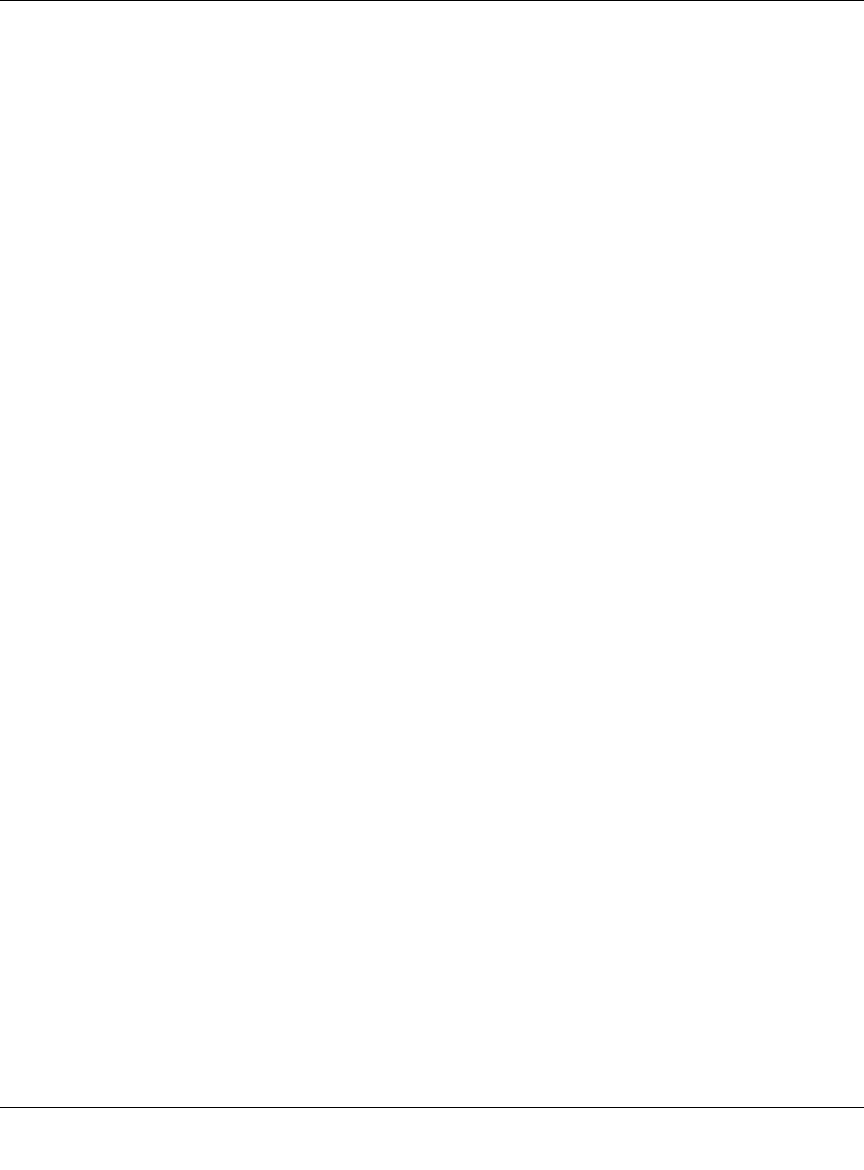User's Manual
Table Of Contents
- ProSecure Web/Email Security Threat Management (STM) Appliance Reference Manual
- Contents
- About This Manual
- Chapter 1 Introduction
- Chapter 2 Using the Setup Wizard to Provision the STM in Your Network
- Choosing a Deployment Scenario
- Understanding the Steps for Initial Connection
- Logging In to the STM
- Using the Setup Wizard to Perform the Initial Configuration
- Setup Wizard Step 1 of 10: Introduction
- Setup Wizard Step 2 of 11: Networking Settings
- Setup Wizard Step 3 of 11: Time Zone
- Setup Wizard Step 4 of 11: Email Security
- Setup Wizard Step 5 of 11: Web Security
- Setup Wizard Step 6 of 11: Email Notification Server Settings
- Setup Wizard Step 7 of 11: Update Settings
- Setup Wizard Step 8 of 11: HTTP Proxy Settings
- Setup Wizard Step 9 of 11: Web Categories
- Setup Wizard Step 10 of 11: Configuration Summary
- Setup Wizard Step 11 of 11: Restarting the System
- Verifying Proper Installation
- Registering the STM with NETGEAR
- What to Do Next
- Chapter 3 Performing Network and System Management
- Configuring Network Settings
- Configuring Session Limits and Timeouts
- Configuring the HTTP Proxy Settings
- About Users with Administrative and Guest Privileges
- Configuring Remote Management Access
- Using an SNMP Manager
- Managing the Configuration File
- Updating the Software
- Configuring Date and Time Service
- Managing Digital Certificates
- Managing the Quarantine Settings
- Performance Management
- Chapter 4 Content Filtering and Optimizing Scans
- About Content Filtering and Scans
- Configuring E-mail Protection
- Configuring Web and Services Protection
- Configuring Application Control
- Setting Scanning Exclusions and Web Access Exceptions
- Chapter 5 Managing Users, Groups, and Authentication
- About Users, Groups, and Domains
- Configuring Groups
- Configuring User Accounts
- Configuring Authentication
- Global User Settings
- Viewing and Logging Out Active Users
- Chapter 6 Monitoring System Access and Performance
- Chapter 7 Troubleshooting and Using Online Support
- Appendix A Default Settings and Technical Specifications
- Appendix B Related Documents
- Index

ProSecure Web/Email Security Threat Management (STM) Appliance Reference Manual
6-34 Monitoring System Access and Performance
v1.0, September 2009
You can query and view the spam quarantine file and the malware quarantine file separately and
filter the information based on a number of criteria. You can filter the spam quarantine file using
the following criteria:
• Start date and time
• End date and time
•User name
• Source IP address
• Sender e-mail address
• Recipient e-mail address
• Subject
• Size of the e-mail
You can filter the malware quarantine file using the following criteria:
• Start date and time
• End date and time
• Protocols (HTTP, HTTPS, FTP, SMTP, POP3, and IMAP)
•User name
•Malware name
• Client IP address
• Recipient e-mail address
• Recipient e-mail address
• URL or subject
• Size of the file
To query the quarantine files:
1. Select Monitoring > Quarantine from the menu. The Quarantine screen displays (see
Figure 6-14 on page 6-35).
2. Depending on the selection that you make from the Quarantine File Type pull-down menu, the
screen adjusts to display the settings for the selected type of quarantine file. Figure 6-14 on
page 6-35 displays the spam quarantine file settings as an example.










